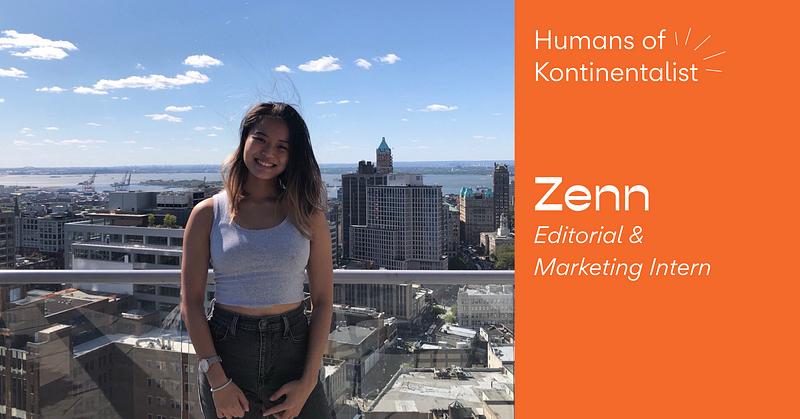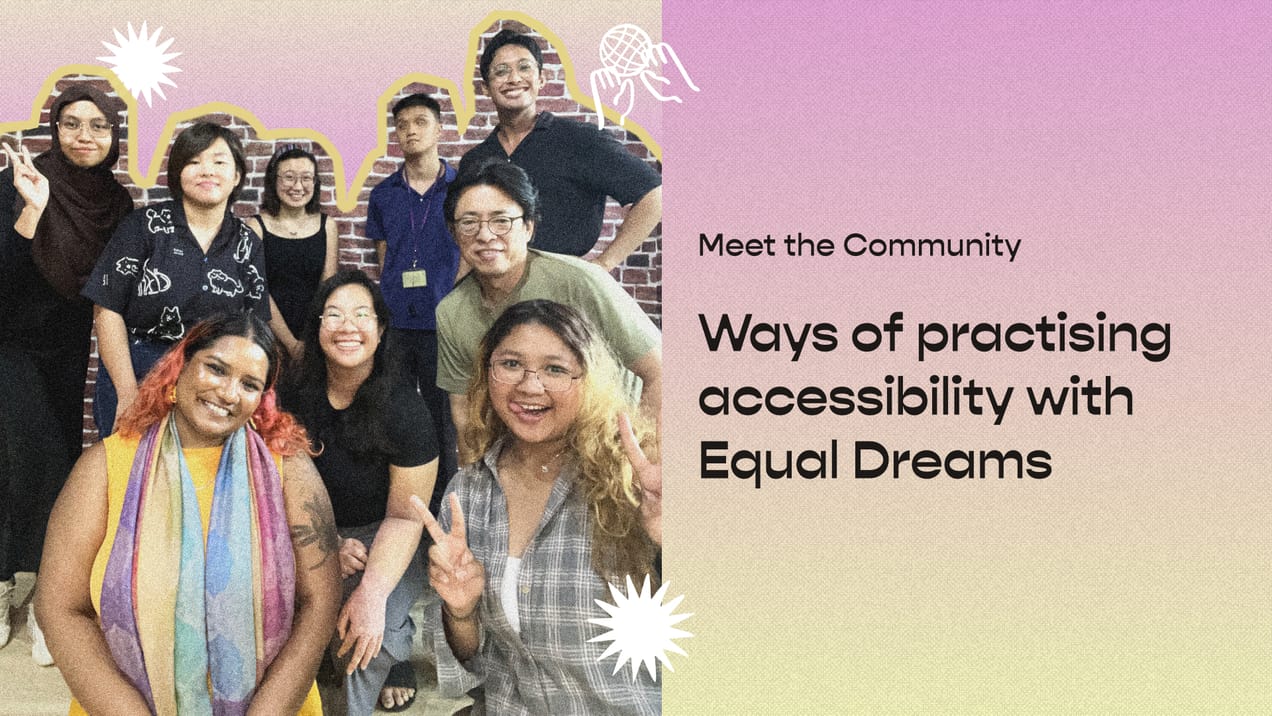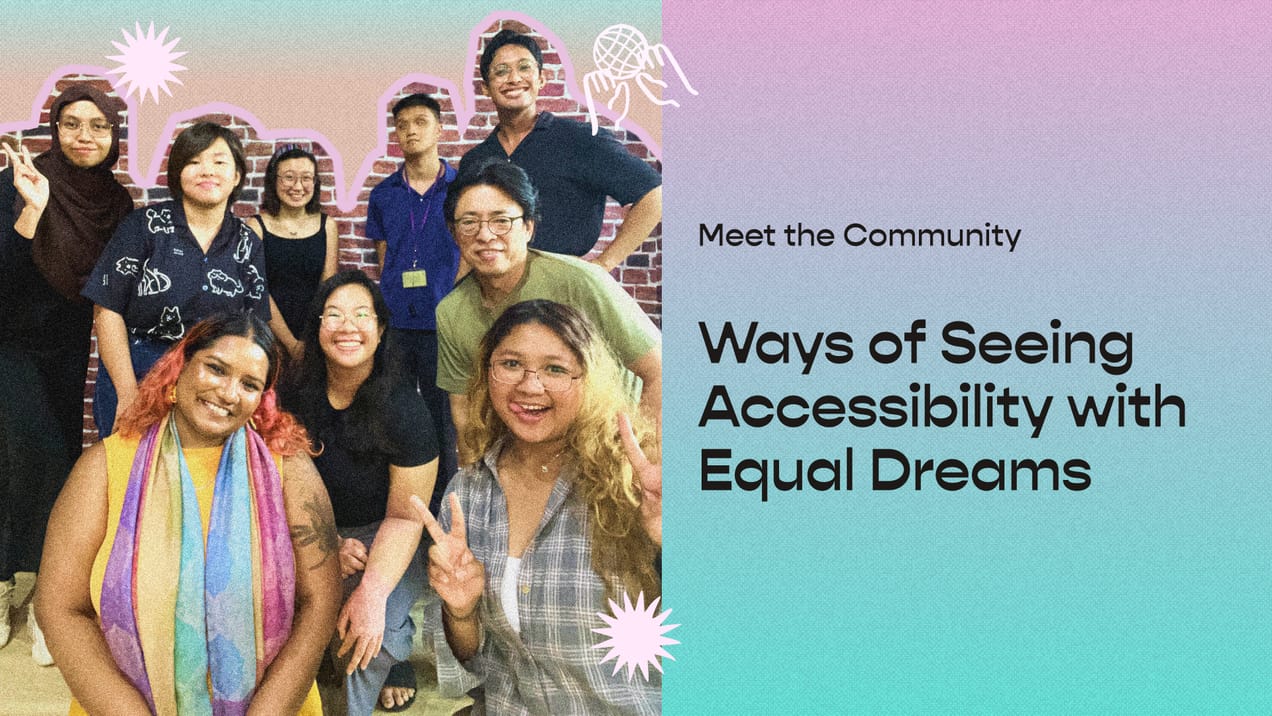
Humans of Kontinentalist: Zenn Wong
Given our mutual enthusiasm in maps, Konti has seen our share of geography interns. Zenn shares what else an internship with us can offer.
How did you find out about Konti?
Most of the people in my social circles in school — because I did geography — are interested in urban studies, urban planning, etc. So a lot of them have been following and resharing Konti’s content, because you all cover those kinds of environmental and social issues — and that’s how I got to know Konti and have been a follower since.
Instagram was the first way I got to know Konti. I was super astounded, especially by the interactive stories, like the BRI story — I was like, oh, my goodness, I want to work here. Yeah, so I applied!
Okay, so what have you been doing as an intern?
As the editorial and marketing intern, I tag along and help writers with that entire process from start to end. This includes things like data collection, cleaning, analysis, and visualisation. So, for example, I helped Zafirah create a bivariate choropleth map for her heat inequality story. Sometimes I help with the brainstorming as well, just thinking about what content to write. For marketing, I helped with the marketing analytics table — basically just managing the data collection, some very bare-bones analysis, and also performing very routine marketing functions like copywriting. I love it, it’s so fun!
You were super helpful to so many people — are still going to be involved in the ODM story?
Yah, I’m helping Pei Ying with the data collection, cleaning, and visualising in Flourish — and writing a small part. Which I’m excited for, as it’s my first writing thing with Konti.
So far Zafirah’s story — I collected the data, processed it, analysed it, and made the map in Flourish. It’s a bit difficult to navigate, because instead of just one colour spectrum, this map has two contrasting colours. And then, it’s like a 3x3 grid. Okay, if we have like, red and blue [representing] two different variables, and then they converge to purple if they’re really high on both variables. So we were doing trees versus income — we wanted to see, like, which places have high income and high trees, or low income and low trees, that kind of thing.
So yeah, it was a bit difficult to put into Flourish, because they don’t have this kind of bivariate representation. So we had to hardcode the colours into the map into Flourish. But it was really fun. Munirah was really helpful with picking the colours as well, because I’m not a designer; I just pick whatever colour just works. She took the time to find colours that match the story and theme. So that was fun, working with her.
What’s been the most fun part of the internship?
Copywriting is fun! I didn’t expect it as well, because when I came into this, I thought I would just be an editorial intern, but then the marketing was so refreshing — because that’s how I got to know Konti right, through the marketing assets, so it’s very interesting to be on the other side. I also really wanted to know how Konti operates and how everything just goes from an idea to whatever you put on the website and on Instagram. Also, I love when everything is wrapped up, and you see the data viz come to life. Seeing everything fall into place after all the hard work, like the first preliminary viz in the sexual assault story; it felt really good seeing it come to life after the insane number of hours.
It’s like a baby right, you carry something from your mind then you pop it out [laughs]
[laughs] Yah, but it’s like there’s five of us carrying this baby — it’s a shared womb! [laughs]
So you like the part at the end where the data viz comes to life?
I think it’s because of how I was raised in data work. In school, the dataset is given to you and we’re trained more in analysis. I wasn’t really trained in the data collection kind of thing. The experience at Konti has taught me a newfound appreciation for the datasets that I use — like all of them have to come from somewhere; some humans sat there for like, 20 hours, just Googling all this data or whatever. So yeah, every dataset I use now I’m going to be like, thank you, whomever.
Has there been anything in your internship that surprised you, considering you’ve already been following Konti for a while?
The most surprising part was the company culture, actually. Because before Konti, I’ve only ever worked at an MNC and at government organisations. So they’re all very hierarchical. When I came to Konti, it’s very refreshing. There’s still a boss and supervisors, but everyone’s voices are equally valued. I’m working on [projects with] Peiying, who’s literally the boss, and she respects every opinion that I put out; every suggestion that I make, she actually listens to it and values it. And not saying that the other organisations I’ve worked with, like, people don’t respect my opinions — they do. But it’s very different. Because we don’t have as much of an opportunity to voice our thoughts. Konti really gives me a platform to just be equals with whomever I’m working with, to just give my suggestions. And yeah, everyone listens and values everything that I say, which is amazing.
And I hope to bring this to wherever I go next time — the sense of making even people that I’m leading feel like their thoughts and suggestions are very valuable.
Yeah, I think you can definitely bring that to wherever you go. So, why did you go to study Geography with Quantitative Methods?
Ever since secondary school, I’ve always really liked geography, because it’s fun. It talks about society, and it talks equally as much about the environment. And it just talks about the world that we live in right now. So in JC, I did well in it, and then I taught geography for four months as a new teacher. Even in primary school, I was in gardening clubs and things like that. So, geography was a very broad-brush degree that incorporated everything that I was interested in. They had a marketing talk for quantitative methods. So, at first, I thought it was pure geography. And then a Professor came and said, if you’re interested in big data and are good at math and statistics, why don’t you try this specialisation? I thought that sounded interesting, so I took it. Now I’m doing a Master’s in urban data sciences (the full name is “urban sciences and informatics”).
What’s an example of urban data science?
Example — where fire trucks would go to predict where the fire hotspots will go. New York has lots of open data sets; it’s beautiful.
I looked through your Medium, and you did one on pub distribution and food inequality. It seems like the common thing you’re interested in is spatial inequalities?
Yep, especially with food. I think in one sense, food is like a human right — to be able to eat food is a fundamental basis of life. On top of that, in Singapore people always think food is so cheap and accessible. Why is there anyone who’s starving, why can’t anyone afford food? I wanted to take it from a different angle; maybe it’s not about being able to afford food, but about where the affordable food may be located. Because you can tell me that on average, Singapore’s food is very cheap. But when you map it out, is it really cheap across the entirety of Singapore? Does this average really hold true for like, the entire island, and for whom is it not accessible?
So what were your thesis’s findings?
So, I categorised the food outlets into different categories. But in terms of price, I only managed to do it for hawker centres, food courts, and kopitiams. I used the dataset from NUS. For the richer areas, like Bukit Timah and Tanglin, there are few HDBs there. They have the cheapest hawker food by quite a huge margin. Everyone else’s average basket of food is like $12, at least; it includes a drink, Milo, and one dish of each cuisine — which is in the methodology of the makan index, the dataset I used. Every other planning area is like $12.50 at least, then for Bukit Timah it’s like $11.70. I was very intrigued. So one possible explanation is that there’s so many atas restaurants there, so the USP (unique selling proposition) for hawker centres is to decrease their prices; or it can be like a land thing — maybe (rent is) not as expensive? I’m not sure why. Maybe someone else, or maybe I in the future, can figure out why.
What’s the coolest thing you like in the data-for-good space?
Can I say Konti? Data for good can be lots of things. I like how Konti takes the data and uses it to show social inequalities, packaging it nicely so people are interested in reading it, to get the word out there these inequalities exist and we should take note of that. I’m also about to volunteer for this organisation called She Loves Data, which is this feminist organisation for teaching data. It’s based in Singapore, but it is international.
So, in the activism space in Singapore, even with all these social media accounts popping up and pointing out issues of social injustice, you feel like Konti’s adding something different?
Yeah, definitely. Because it’s not just about the dataviz. You have to explain it and make it palatable and back it up with a narrative, which is why I thought — and think — Konti is so amazing.
What do you want to do for your career from here on out?
I want to work in a geospatial-facing role, technical admin role, and in the long-term, I want to work in a big multilateral department in the data side of things and bring it back to Singapore, and to shape policies.
Quick-fire question time!
Fiction or nonfiction?
Fiction!
Coffee or tea?
Can I choose both?
Mountains or beaches?
Beaches!
Sun or moon?
Sun~
Questions from the Konti team!
Share some tips on how to get fit!
Making actionable goals and sticking to a program that is sustainable! The most sustainable fitness program is the one that you find fun. It doesn’t always have to be what others are doing; just find an exercise that you enjoy doing, and stick with it!
What did you do during the lockdown in Singapore when gyms were closed?
Emo-ing and using the home barbell set that my younger brother bought! I also did Zumba at home with my grandma.
Which people do you look up to in the dataviz field?
I’m enamoured with Jane Zhang’s work — especially her use of data viz for explaining the rules of board games like Bang! I’m fond of board games, but I’m also quite slow at picking up new rules. I thought that this was such an innovative use of data viz. She has other really creative uses of data viz too, like redesigning a menu and preserving her grandmother’s recipes!
What random interests do you have?
Board games! I’m a huge board game nerd. Over the pandemic, my partner and I amassed another eight new board games, including expansion packs.
What topic could you give a 20-minute presentation on without any preparation?
How Singapore’s urban food access varies across planning areas and demographics. (But does my nine-month-long dissertation on this topic count as preparation?)
As someone who wakes up early, describe your morning routine.
Wake up, laze around in bed for five minutes replying texts, get out of bed, boil water for my eggs while brushing my teeth, cook my eggs (seven minutes for eggs fresh out the fridge), eat them while scrolling through social media, then hit the gym if it’s a gym day.
Have you always been so disciplined (wake up at 6am, gym, work, sleep at 9pm)? What made you so determined?
Not at all (laughs). When I was in London, I partied pretty hard and did not keep a consistent schedule like this at all. But the lack of sleep really caught up with me and got in the way of my fitness goals, especially when I was not progressing on my lifts. So I decided to keep a more consistent sleep schedule and stick with it!
I have some big fitness-related dreams that I hope to achieve! I also stand by my favourite quote, which has taken me through A-levels and undergrad: “Screw motivation, have discipline.” To me, motivation is the “feeling” of wanting to get something done, whereas discipline is really just coming up with a schedule or a task list, and just getting it done!


